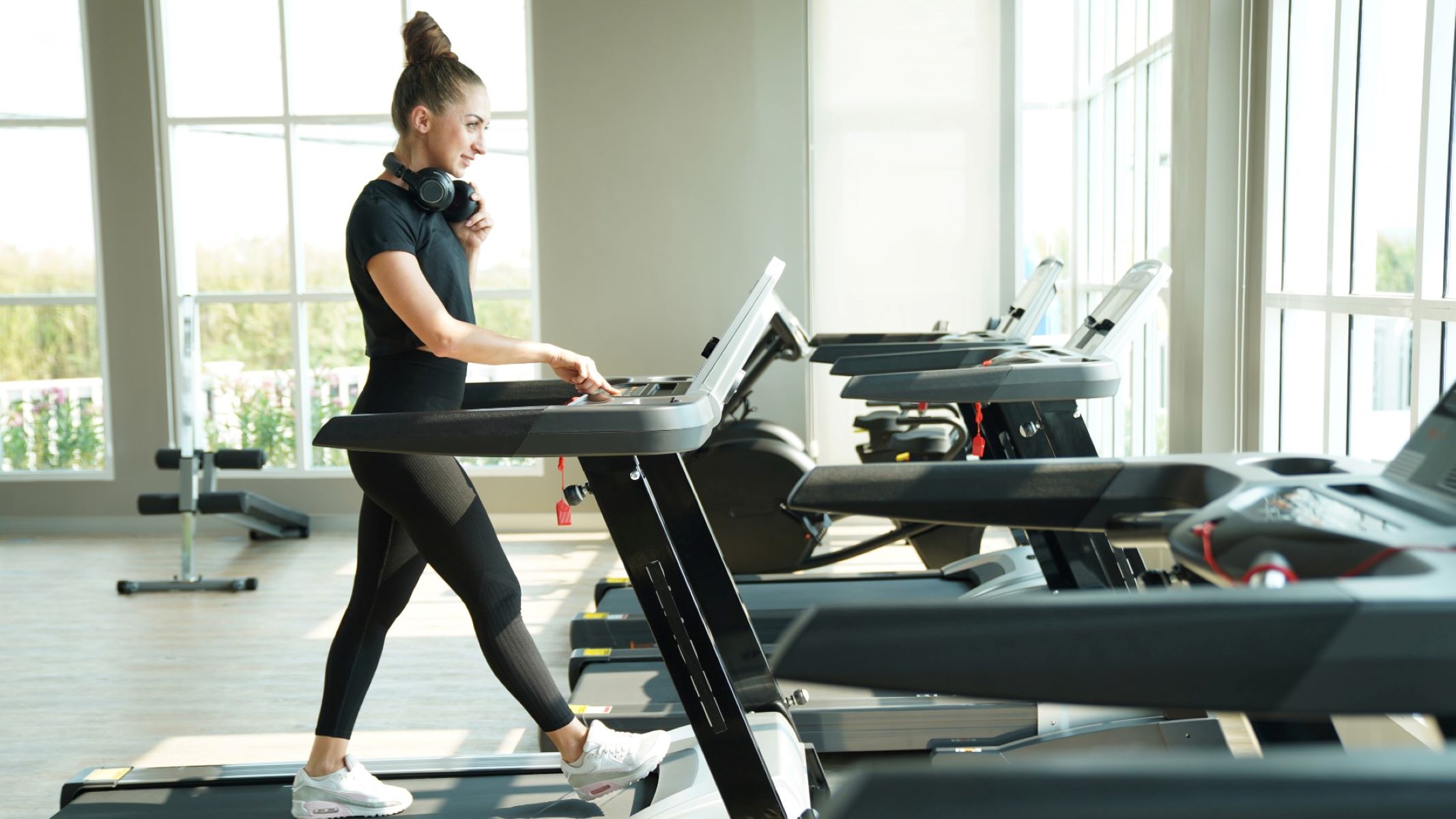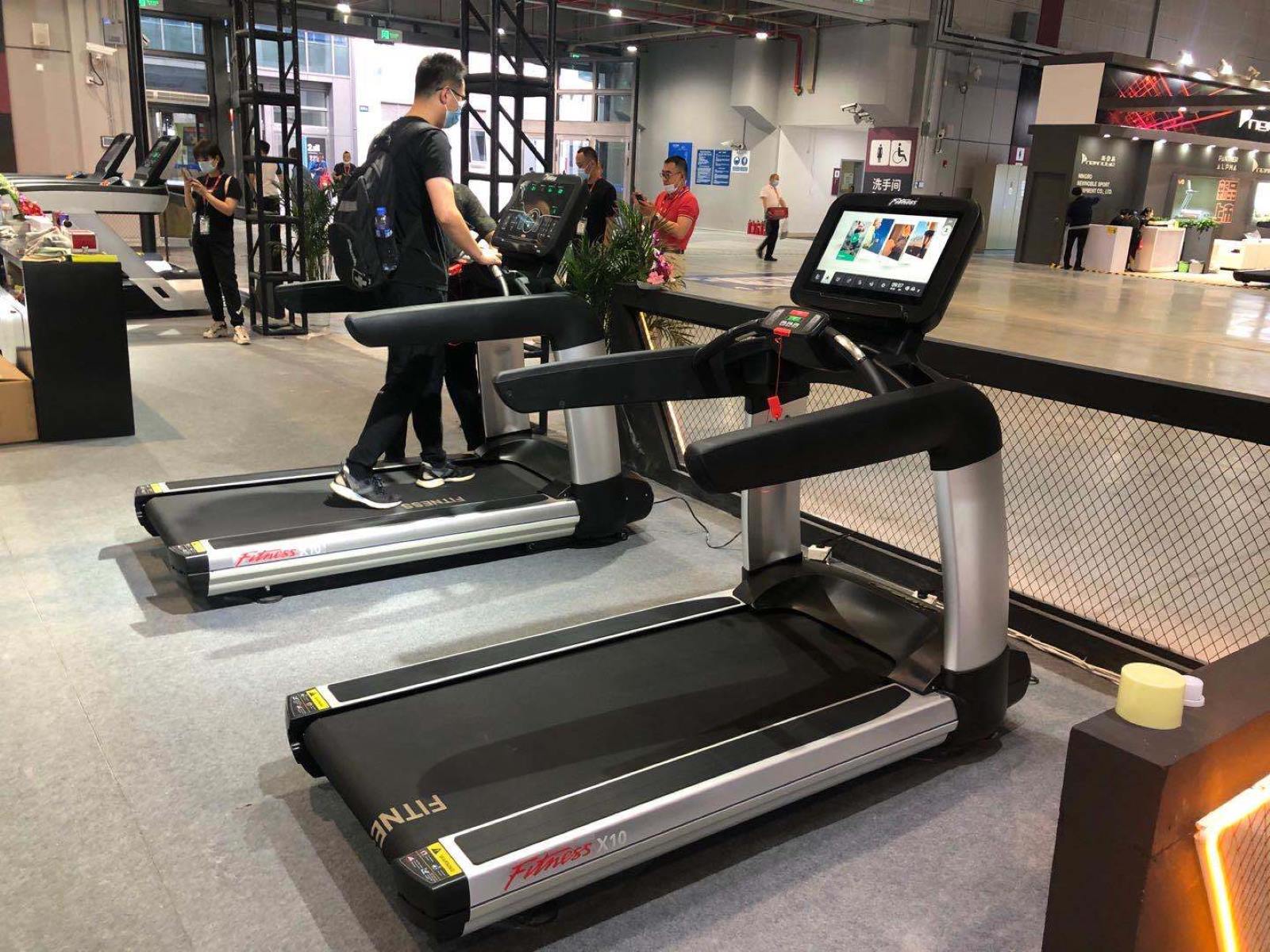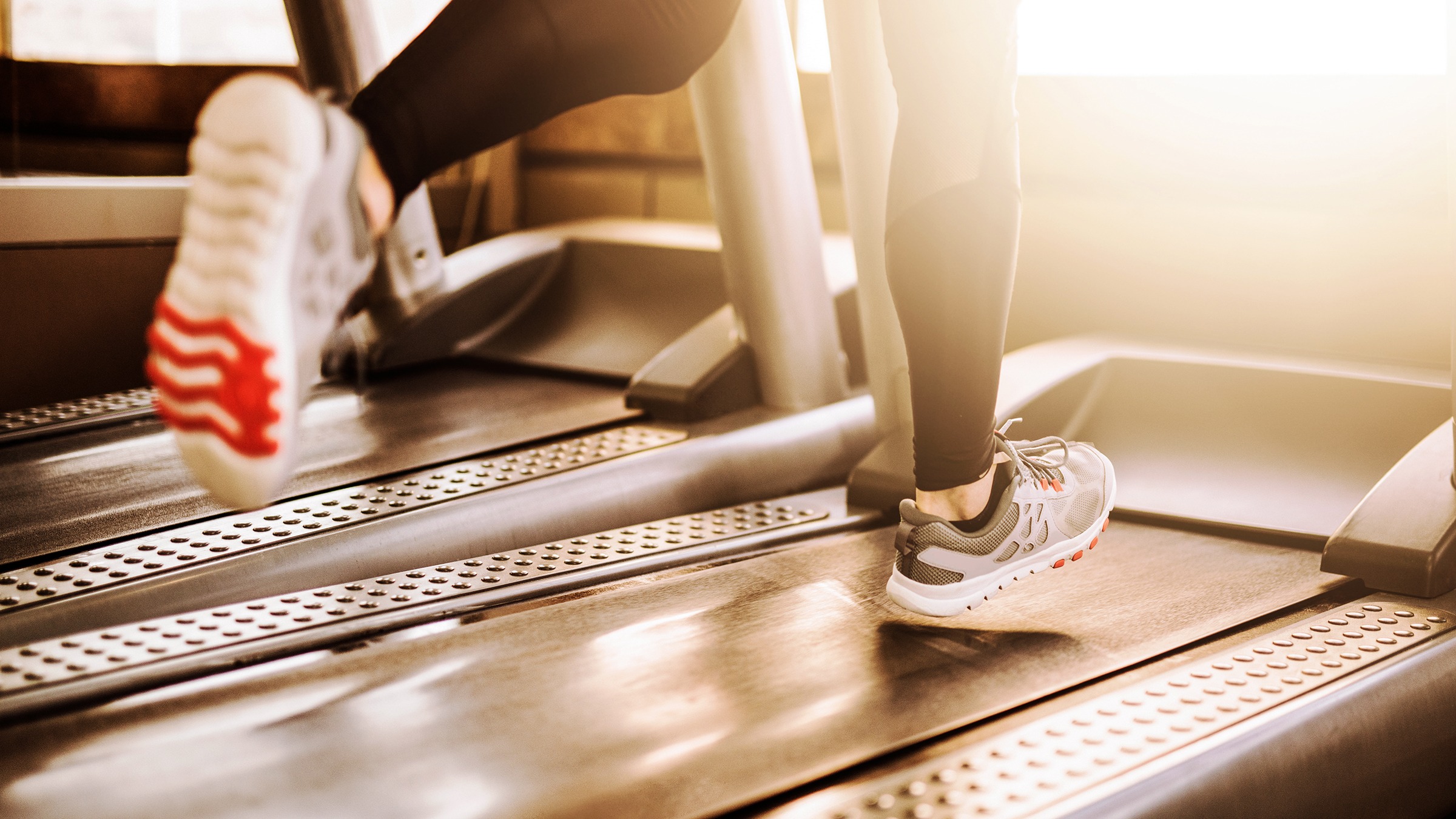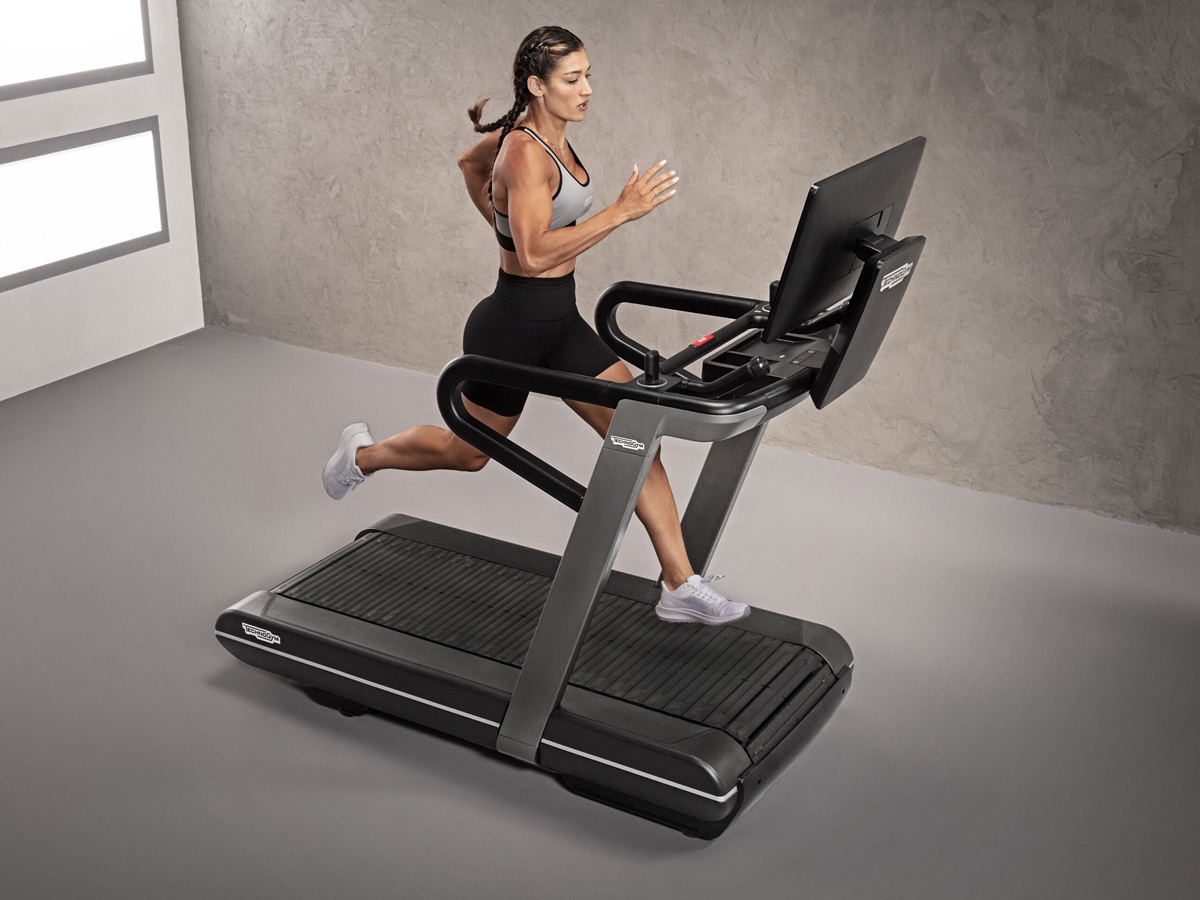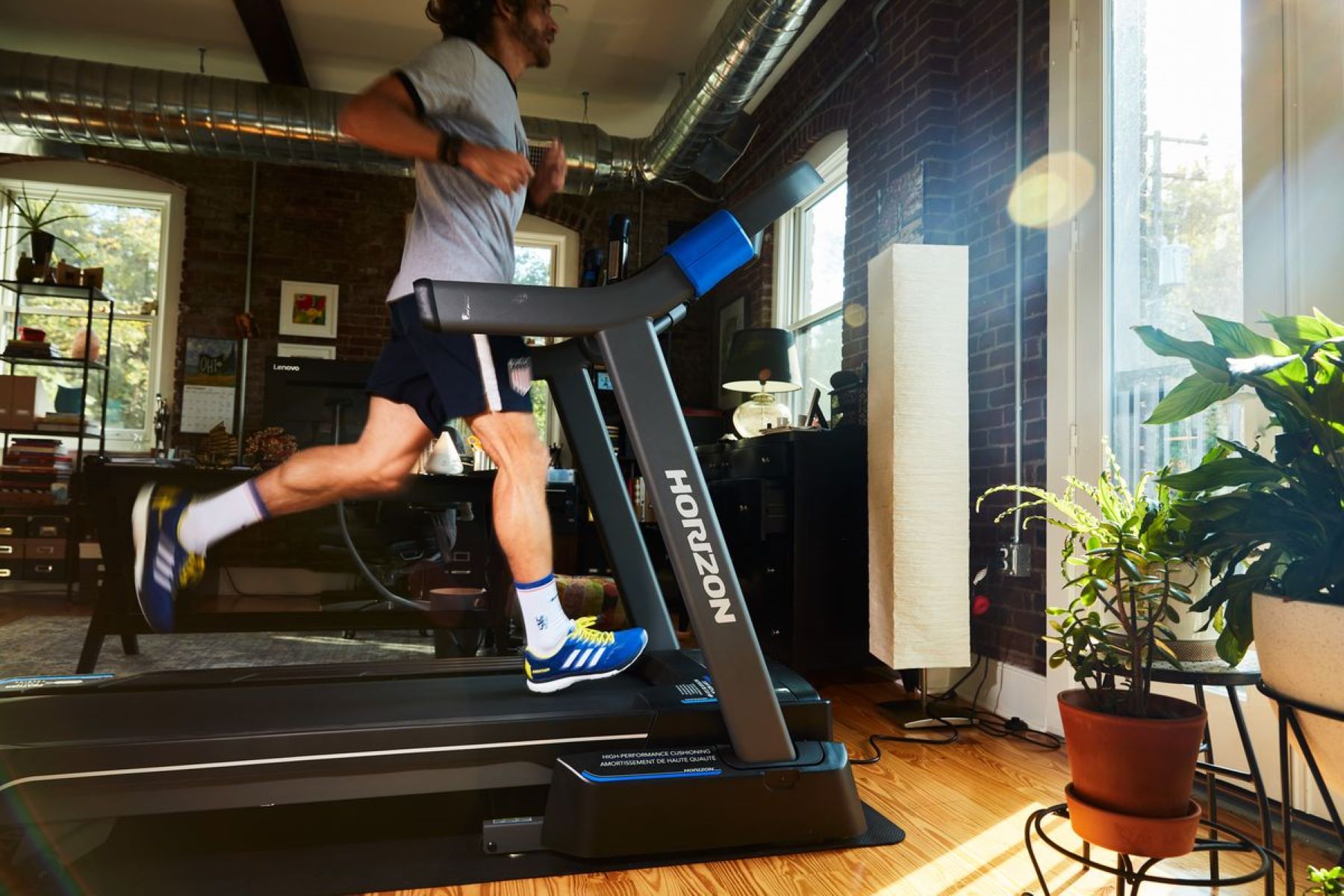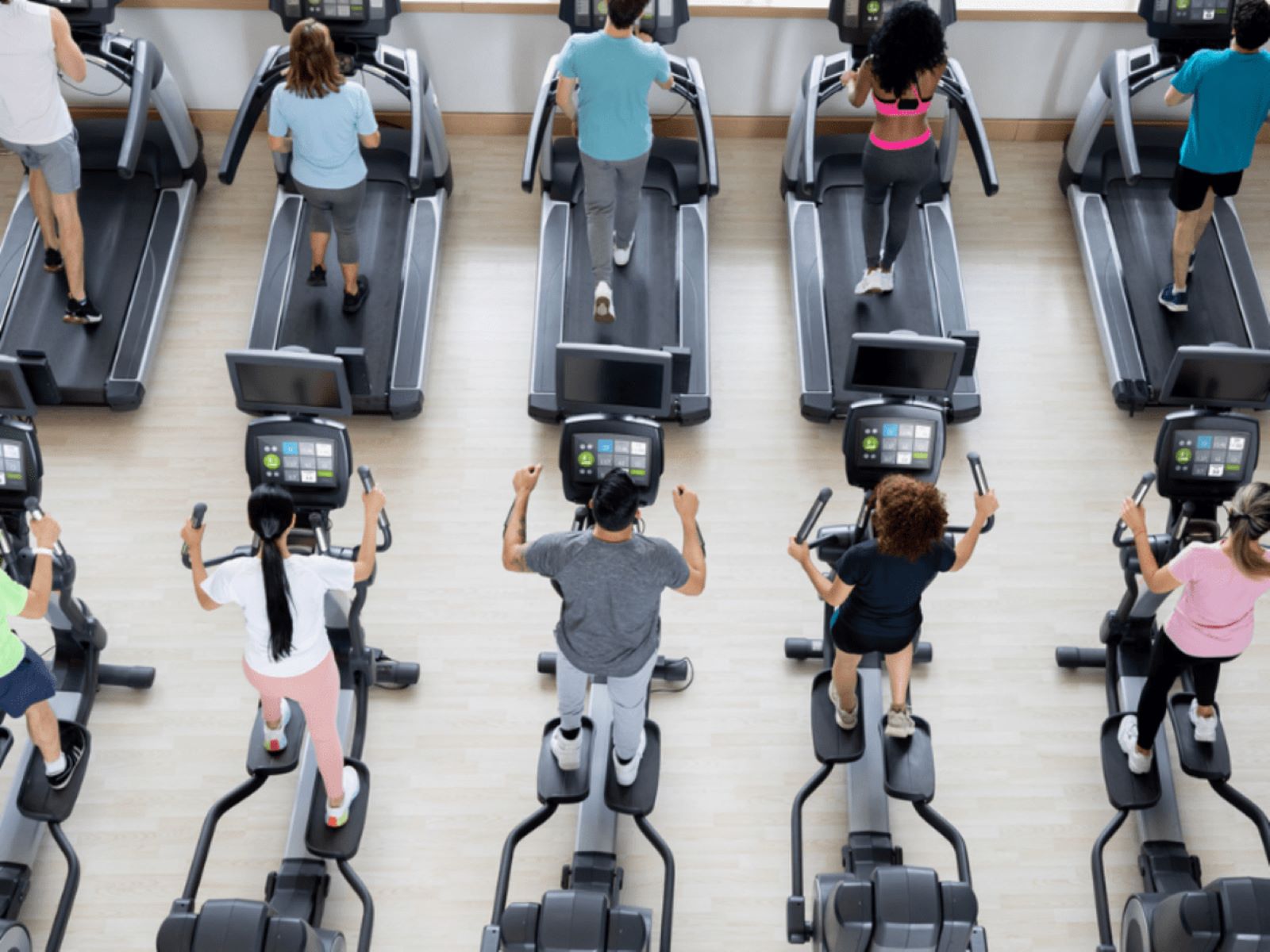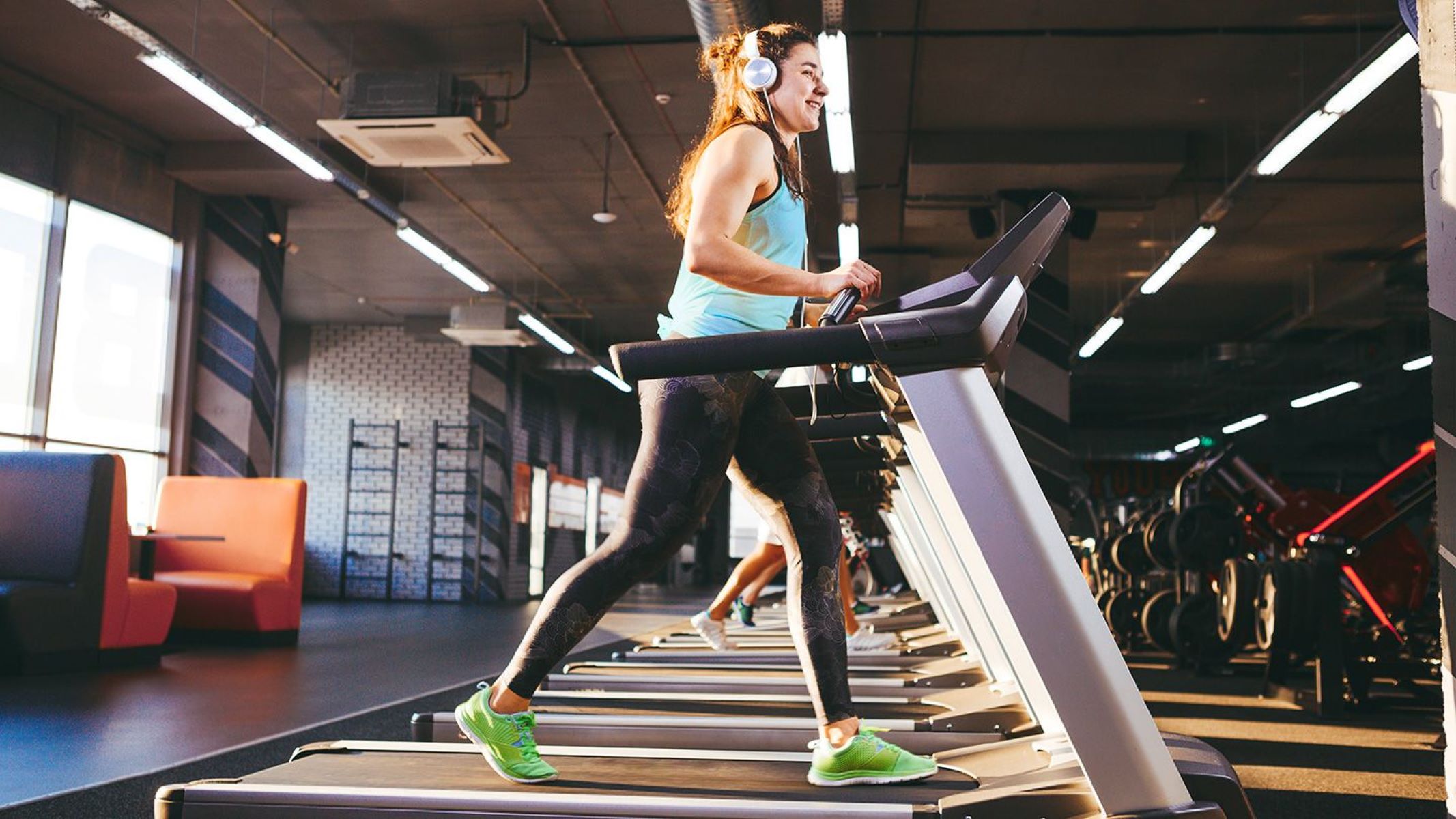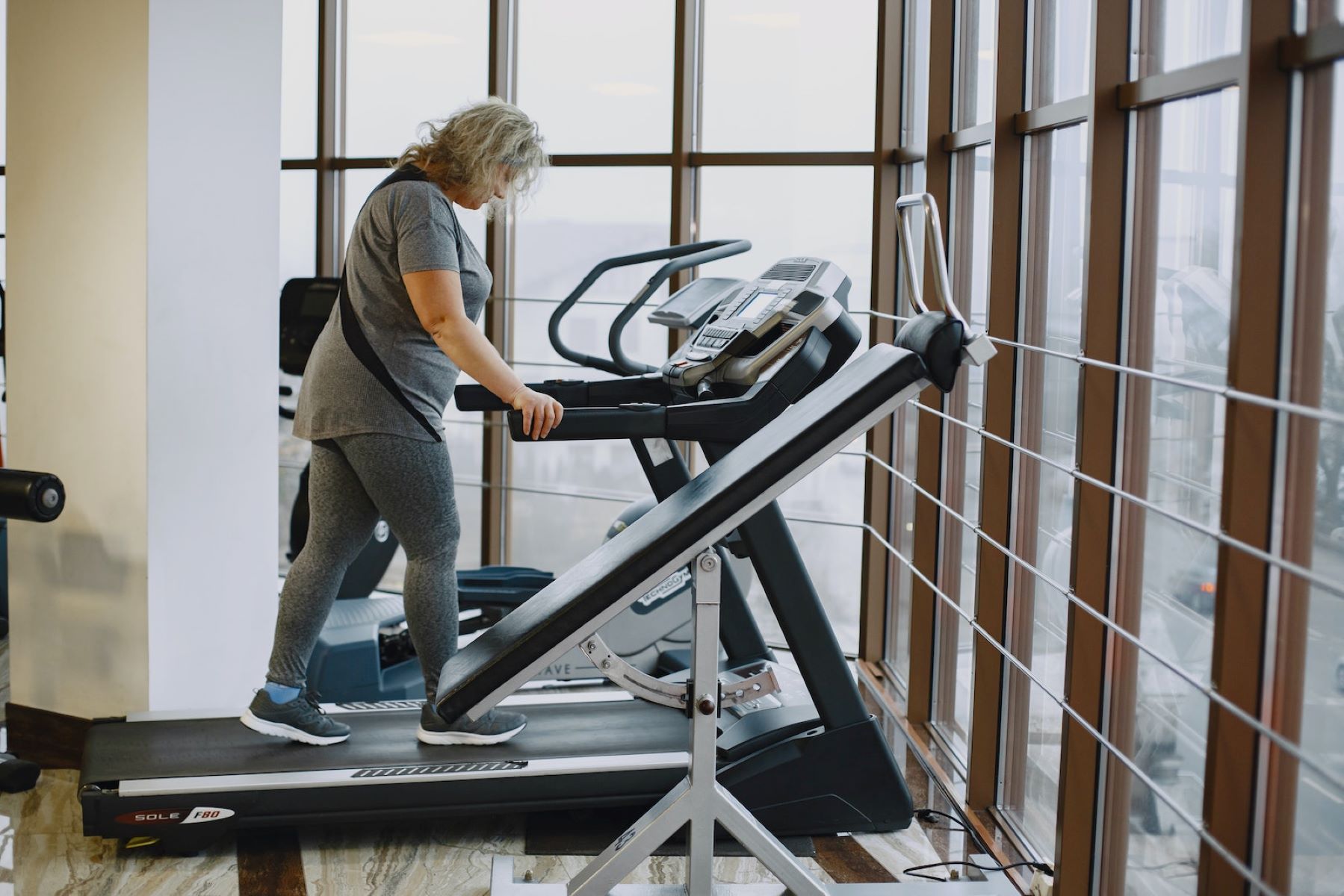Home>Misc>Featured>Horizon Fitness How To Do High Intensity Interval Training On A Treadmill


Featured
Horizon Fitness How To Do High Intensity Interval Training On A Treadmill
Modified: August 21, 2023
Achieve maximum fitness results with Horizon Fitness! Learn how to do high intensity interval training (HIIT) on a treadmill. Get featured now!
Introduction
Welcome to the world of high-intensity interval training (HIIT) on a treadmill. HIIT has gained tremendous popularity in recent years due to its effectiveness in burning calories and improving cardiovascular fitness. This type of workout involves alternating between high-intensity bursts of exercise and short periods of rest or low-intensity activity.
A treadmill is an excellent tool for performing HIIT. It offers a controlled and adjustable environment that allows you to push your limits and achieve optimal results. Whether you’re a beginner or an experienced fitness enthusiast, incorporating HIIT into your treadmill workouts can take your fitness journey to new heights.
In this article, we will explore the world of high-intensity interval training on a treadmill and discuss its benefits, how to prepare for a HIIT workout, essential warm-up and cool-down exercises, safety tips, and more. By the end, you’ll be equipped with the knowledge to create effective and enjoyable HIIT treadmill workouts.
Before we dive into the details, it’s important to note that HIIT may not be suitable for everyone. If you have any underlying medical conditions or injuries, it’s always best to consult with a healthcare professional before starting a new exercise regimen. Safety should always be the top priority in any fitness routine.
Now, let’s get ready to elevate your treadmill workouts and tap into the power of high-intensity interval training!
What is High Intensity Interval Training (HIIT)?
High-Intensity Interval Training (HIIT) is a workout methodology that involves short bursts of intense exercise followed by periods of rest or low-intensity activity. This approach to training has gained popularity due to its efficiency in burning calories, improving cardiovascular fitness, and increasing overall metabolic rate.
Unlike traditional steady-state cardio exercises, such as jogging or cycling at a consistent pace, HIIT involves pushing yourself to your maximum effort during the high-intensity intervals, which can range from 10 seconds to a few minutes, depending on your fitness level and goals.
The key principle of HIIT is to elevate your heart rate to near-maximum levels during the high-intensity intervals, followed by active recovery or rest periods. This pattern of alternating between high-intensity and low-intensity or rest periods creates a metabolic demand that continues even after the workout is completed. This is known as the “afterburn effect” or excess post-exercise oxygen consumption (EPOC), which can result in increased calorie burn and fat loss.
One of the benefits of HIIT is its versatility. It can be performed with various exercises, including running, cycling, bodyweight exercises, and even swimming. When it comes to HIIT on a treadmill, you have the advantage of a controlled environment, adjustable speed and incline settings, and the ability to monitor and track your progress.
HIIT workouts on a treadmill typically involve short bursts of sprinting or running at a challenging pace, followed by active recovery periods where you slow down or walk at a slower speed. The duration and intensity of the intervals can be modified based on your fitness level and preferences.
Whether your goal is to improve cardiovascular fitness, burn calories, or enhance athletic performance, incorporating HIIT into your treadmill workouts can help you reach your goals efficiently. It is an effective and time-efficient way to maximize the benefits of your exercise sessions.
Now that you have a better understanding of what HIIT entails, let’s explore the specific benefits of incorporating this training method into your treadmill workouts.
Benefits of HIIT on a Treadmill
Incorporating high-intensity interval training (HIIT) into your treadmill workouts offers a range of benefits that can elevate your fitness level and make your exercise routine more effective. Let’s explore some of the key advantages of HIIT on a treadmill:
- Efficient calorie burn: One of the main benefits of HIIT is its ability to help you burn a significant amount of calories in a shorter amount of time. By engaging in short bursts of intense exercise followed by periods of rest or active recovery, HIIT elevates your heart rate and increases your calorie burn both during and after the workout.
- Improved cardiovascular fitness: HIIT on a treadmill offers an excellent cardiovascular workout. The intense bursts of running or sprinting raise your heart rate and challenge your cardiovascular system, improving your overall cardiovascular endurance over time. This can lead to a reduced risk of heart disease and improved heart health.
- Increased fat loss: HIIT has been shown to be highly effective in burning fat. The high-intensity intervals push your body to its limits, increasing your metabolic rate and promoting fat loss. Additionally, the afterburn effect of HIIT keeps your body in a calorie-burning state long after you’ve finished your workout.
- Muscle preservation: Unlike steady-state cardio exercises that can lead to muscle loss, HIIT on a treadmill helps preserve muscle mass. The intense bursts of exercise engage your fast-twitch muscle fibers, helping to maintain and even build lean muscle. This can improve your overall body composition and metabolism.
- Time-efficient: HIIT workouts on a treadmill are known for their time-efficiency. Due to the high intensity of the intervals, you can achieve significant fitness benefits in a shorter amount of time compared to longer, steady-state cardio sessions. This makes HIIT an ideal option for individuals with busy schedules looking to maximize their workout efficiency.
- Variety and challenge: HIIT on a treadmill offers endless possibilities for variation and challenge. You can adjust the speed, incline, and duration of the intervals to suit your fitness level and goals. This flexibility ensures that you can continually challenge yourself and avoid workout plateaus.
Overall, incorporating HIIT into your treadmill workouts can provide numerous benefits for your physical health and fitness. It offers a time-efficient and effective way to burn calories, improve cardiovascular fitness, and promote fat loss. Additionally, the versatility and challenge of HIIT keep your workouts engaging and help you achieve your fitness goals more efficiently.
Preparing for a HIIT Workout on a Treadmill
Before diving into a high-intensity interval training (HIIT) session on a treadmill, it’s crucial to adequately prepare both physically and mentally. Proper preparation will help ensure a safe and effective workout. Here are some essential steps to take before starting a HIIT workout on a treadmill:
- Consult with a healthcare professional: If you have any pre-existing medical conditions or concerns, it’s important to consult with a healthcare professional before starting any new exercise program. They can provide personalized advice based on your individual health and fitness needs.
- Select the right treadmill: Choose a treadmill that is suitable for high-intensity workouts. Look for one with a sturdy construction, a wide running belt, and a powerful motor that can support your speed and incline requirements.
- Warm-up properly: Before jumping into the intense intervals, warm up your muscles and prepare your body for the workout. Begin with 5-10 minutes of light cardio, such as walking or slow jogging, to gradually increase your heart rate and body temperature.
- Set your goals: Determine your goals for the HIIT workout. Whether it’s increasing endurance, burning calories, or improving speed, having a clear objective will help you structure the workout effectively.
- Plan your intervals: Decide on the duration and intensity of your high-intensity intervals and the length of your rest or active recovery periods. Aim for a challenging intensity level during the high-intensity intervals and keep the rest periods long enough to allow for recovery but not too long that your heart rate drops significantly.
- Proper footwear and attire: Wear proper athletic shoes that provide adequate support and cushioning for running on a treadmill. Dress in comfortable, breathable clothing that allows for freedom of movement.
- Stay hydrated: Hydration is essential for any workout. Make sure to drink water before, during, and after your HIIT session. Keep a water bottle nearby to sip on during your rest periods.
- Start with a beginner-friendly routine: If you’re new to HIIT or treadmill workouts, it’s essential to start with a beginner-friendly routine. Begin with shorter intervals and gradually increase the intensity and duration as your fitness level improves.
By taking these necessary steps to prepare for your HIIT workout on a treadmill, you can set yourself up for a successful and safe training session. The right equipment, warm-up, goal-setting, and starting with a suitable routine will allow you to make the most of your HIIT workouts and effectively achieve your fitness objectives.
Warm-up Exercises
A proper warm-up is crucial before engaging in high-intensity interval training (HIIT) on a treadmill. It helps prepare your body for the intense exercise to come, reduces the risk of injury, and enhances overall performance. Incorporating a dynamic warm-up routine can increase your heart rate, improve blood flow, and mobilize your joints. Here are some effective warm-up exercises to consider before your HIIT treadmill workout:
- Dynamic stretches: Begin with dynamic stretching exercises to warm up your muscles and improve flexibility. Perform exercises such as leg swings, arm circles, hip rotations, and torso twists. These movements help loosen up your joints and increase the range of motion.
- Jumping jacks: Jumping jacks are an excellent warm-up exercise as they elevate your heart rate and engage multiple muscle groups. Start with a few sets of 10-15 reps to get your blood pumping and your body ready for the HIIT workout.
- High knees: This exercise involves jogging in place while lifting your knees as high as possible. It engages your hip flexors, quadriceps, and core muscles. Perform high knees for 30-60 seconds to increase your heart rate and warm up your lower body.
- Butt kicks: Similar to high knees, butt kicks are performed by jogging in place, but this time you aim to kick your heels up towards your glutes. It targets your hamstrings and helps warm up your lower body before the intense treadmill intervals.
- Walking lunges: Walking lunges activate your leg muscles and improve hip flexibility. Take a step forward with your right foot and lower your body down into a lunge position, keeping your front knee over your ankle. Alternate legs as you walk forward, performing 10-12 lunges on each leg to warm up your lower body.
- Arm circles: Stand with your feet shoulder-width apart and extend your arms out to the sides. Make small circles with your arms, gradually increasing the size of the circles. After a few seconds, reverse the direction of the circles. This warm-up exercise helps loosen up your shoulder joints and upper body muscles.
- Bodyweight squats: Squats are an excellent warm-up exercise as they engage the lower body muscles, including the quadriceps, hamstrings, and glutes. Stand with feet shoulder-width apart, lower your body down into a squat position, and then stand back up. Perform 10-12 squats to warm up your lower body.
Remember to perform each warm-up exercise in a controlled and gradual manner. Start with lower-intensity movements and gradually increase the intensity and range of motion. The goal of a warm-up is to prepare your body for the upcoming workout, not to exhaust yourself. Listen to your body and make modifications as needed.
By incorporating these warm-up exercises into your routine, you can effectively prepare your body for the high-intensity intervals to follow. Warming up properly sets the foundation for a safe and successful HIIT treadmill workout.
HIIT Workout Plan for Treadmill
Creating a structured and effective high-intensity interval training (HIIT) workout plan for your treadmill sessions is key to maximizing your results. It allows you to push your limits, improve cardiovascular fitness, and burn calories efficiently. Here is a sample HIIT workout plan for a treadmill:
Before starting the workout, ensure that you have a proper warm-up to prepare your body for the intense intervals that follow. Perform dynamic stretches and warm-up exercises such as jumping jacks, high knees, and walking lunges. Remember to listen to your body and make modifications if needed.
Once you are warmed up, you can begin your HIIT treadmill workout. The following is a basic example of a HIIT workout plan:
- Warm-up: Perform a 5-10 minute warm-up consisting of light jogging, dynamic stretches, and mobility exercises.
- Interval 1 – Sprint: Set the treadmill to a challenging speed that allows you to sprint for 30 seconds. Maintain proper running form throughout the sprint interval.
- Interval 2 – Active recovery: After the sprint, reduce the speed or incline of the treadmill and walk or jog at a comfortable pace for 60 seconds. Use this time to catch your breath and recover before the next intense interval.
- Interval 3 – Incline run: Increase the incline of the treadmill to an uphill position that challenges your leg muscles. Run at a moderately challenging pace for 60 seconds. Focus on engaging your glutes and thighs during this interval.
- Interval 4 – Active recovery: Decrease the incline and return to a comfortable walking or jogging pace for 60 seconds.
- Interval 5 – Speed intervals: Alternate between high-intensity sprints and active recovery periods. Run at a challenging speed for 20 seconds, followed by a 40-second active recovery period at a slower pace. Repeat this interval five times.
- Interval 6 – Cool-down: Gradually reduce the speed of the treadmill and allow your heart rate to gradually return to a normal level. Walk for about 5 minutes as a cool-down.
Remember, this is just a sample workout plan, and you can modify the duration and intensity of the intervals based on your fitness level and goals. As you progress, you can increase the duration of the high-intensity intervals and reduce the active recovery periods for a more challenging workout.
It’s important to stay hydrated throughout the workout, sipping water during the rest periods. Listen to your body and adjust the speed and incline settings to match your comfort level and fitness ability. Don’t push yourself beyond your limits and always prioritize safety and proper form.
By following a structured HIIT workout plan on a treadmill, you can push your boundaries, improve cardiovascular fitness, burn calories, and achieve your fitness goals effectively.
Cool-down Exercises
After completing a high-intensity interval training (HIIT) workout on a treadmill, it’s important to properly cool down to gradually bring your heart rate and breathing back to normal and promote recovery. Cooling down can also help reduce muscle soreness and stiffness. Here are some effective cool-down exercises to incorporate into your post-HIIT routine:
- Walking: After completing your last interval, reduce the treadmill speed and allow yourself to walk comfortably for 5-10 minutes. This low-intensity exercise helps your body transition from intense activity to a state of rest.
- Deep breathing & stretching: Take a moment to focus on your breathing and perform deep breaths. Slowly inhale through your nose, hold for a few seconds, and exhale through your mouth. This deep breathing technique helps calm your nervous system and relax your body. Additionally, incorporate static stretches targeting major muscle groups, such as your quadriceps, hamstrings, calves, and hip flexors. Hold each stretch for 15-30 seconds.
- Foam rolling: Using a foam roller, target areas of muscle tightness or tension and roll over them gently. This self-myofascial release technique can help reduce muscle soreness and promote better blood circulation to aid in recovery.
- Hydration: Remember to rehydrate your body after the workout by drinking water or a sports drink. This helps replenish fluids lost through sweat and aids in the recovery process.
- Mindful cooldown: Take a few minutes to mentally acknowledge and appreciate the effort you put into your HIIT workout. Reflect on your achievements and set intentions for future workouts. This mindfulness practice can help promote mental and emotional well-being along with physical recovery.
It’s important to note that cool-down exercises may vary depending on your personal preferences and needs. Choose movements and techniques that work best for you and allow your body to recover in a way that feels comfortable.
By incorporating these cool-down exercises into your post-HIIT routine, you can gradually bring your body back to a normal state and aid in the recovery process. Remember to listen to your body, give it the time and attention it needs, and prioritize rest and recovery to maximize the benefits of your HIIT treadmill workouts.
Safety Tips for HIIT on a Treadmill
High-intensity interval training (HIIT) on a treadmill can be an effective way to improve fitness and achieve your goals, but it’s essential to prioritize safety to avoid injury and ensure a positive experience. Here are some important safety tips to keep in mind when performing HIIT on a treadmill:
- Warm up properly: Always start your HIIT workout with a proper warm-up. This helps prepare your muscles, joints, and cardiovascular system for the intense exercise to come. Spend 5-10 minutes performing dynamic stretches and light cardio exercises to gradually increase your heart rate and body temperature.
- Use proper footwear: Wearing the right shoes is crucial for a safe workout. Choose athletic shoes that provide proper cushioning, stability, and support for running on a treadmill. This can help prevent foot, ankle, and knee injuries and ensure a more comfortable workout experience.
- Pay attention to form: Maintain proper form while running on the treadmill. Keep your head up, shoulders relaxed, and core engaged. Avoid leaning forward or slouching, as this can put unnecessary strain on your back and joints. Land with a midfoot or forefoot strike to promote better running mechanics and reduce the risk of injuries.
- Adjust speed and incline gradually: When starting your HIIT intervals, gradually increase the speed or incline to avoid sudden changes that can strain your muscles or cause you to lose balance. Give your body time to adjust to the changes and find a pace that challenges you but is still manageable.
- Stay aware of your surroundings: Be mindful of your surroundings while on the treadmill. Avoid distractions such as looking at your phone or watching television, as this can increase the risk of losing your balance or getting injured. Stay focused and attentive throughout your workout.
- Stay hydrated: Hydration is essential during any workout, including HIIT on a treadmill. Drink water before, during, and after your workout to maintain proper hydration levels and prevent cramps or dehydration.
- Listen to your body: Pay attention to any pain, discomfort, or signs of fatigue. If you feel any sharp or persistent pain, dizziness, or shortness of breath, it’s important to stop your workout and seek medical attention if necessary. Pushing through pain or ignoring warning signs can lead to further injury.
- Gradually increase intensity: If you’re new to HIIT or treadmill workouts, it’s important to gradually increase the intensity and duration of your intervals. Allow your body time to adapt and build endurance over time. Starting with shorter intervals and lower intensity and gradually progressing will help prevent overexertion and reduce the risk of injury.
Remember, safety should always be your top priority during your HIIT treadmill workouts. Following these safety tips and listening to your body will help you stay injury-free, have a more enjoyable experience, and make progress towards your fitness goals.
Conclusion
Incorporating high-intensity interval training (HIIT) on a treadmill can be a game-changer for your fitness journey. By alternating between intense bursts of exercise and periods of rest or active recovery, you can maximize calorie burn, improve cardiovascular fitness, and stimulate fat loss. However, it’s important to approach HIIT on a treadmill with caution and prioritize safety throughout your workouts.
Before you begin HIIT on a treadmill, make sure to consult with a healthcare professional if you have any underlying medical conditions or concerns. They can provide personalized guidance and ensure that HIIT is suitable for your fitness level.
Proper warm-up exercises are essential to prepare your body for the intense intervals ahead. Perform dynamic stretches, and gradually increase your heart rate and body temperature before diving into the HIIT portion of your workout.
Constructing a well-designed HIIT workout plan for your treadmill sessions is crucial for achieving optimal results. Consider the duration and intensity of your intervals, as well as the length of your active recovery periods. This will help you challenge yourself while still maintaining proper form and technique.
After completing your HIIT workout, it’s important to cool down properly. Perform gentle exercises and stretches, focus on deep breathing, and take the time to reflect on your achievements. Don’t forget to properly rehydrate your body.
Throughout your HIIT treadmill workouts, always prioritize safety. Use proper footwear, pay attention to form, and gradually increase speed and intensity. Stay aware of your surroundings and listen to your body’s signals. Push yourself, but not beyond your limits.
Incorporating high-intensity interval training on a treadmill can take your fitness journey to the next level. It offers numerous benefits, including efficient calorie burn, improved cardiovascular fitness, increased fat loss, and time efficiency. With proper preparation, a structured workout plan, and a focus on safety, you can make the most of your HIIT treadmill sessions and achieve your fitness goals more effectively.
So, lace up your shoes, hop on the treadmill, and get ready to elevate your fitness with the power of high-intensity interval training!
